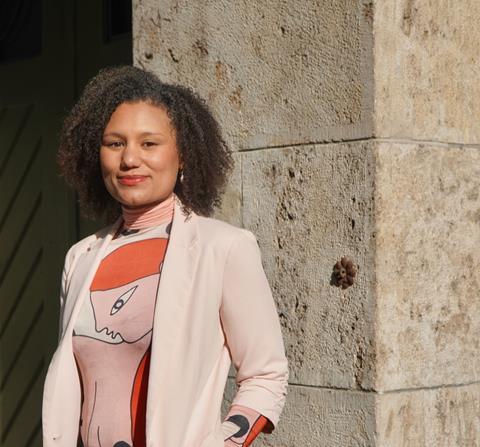Naomi Owusu, co-founder and CEO of Tickaroo, believes live blogs with video content are vital to growing broadcast audiences

Set to be the first Olympic Games to achieve full gender parity on the field of play, the International Olympic Committee (IOC) has urged media organisations to focus on balanced storytelling for all athletes and fair representation of sportspeople in all their diversity at Paris 2024. NBC Universal’s first-of-its-kind initiative, the Paris Creator Collective, speaks to this heightened emphasis on inclusivity in the evolution of Olympic coverage in line with the IOC’s updated portrayal guidelines and their efforts to engage with younger demographics.
The digital transformation of sports coverage
This is part of a wider sea change in sports reporting and content consumption. Digitalisation has transformed how we follow sport and moved it beyond the event. Driven by user needs for greater depth, insight, and interaction, consumers want behind-the-scenes action and detail that helps them get to know their favourite athletes as people and allows greater levels of engagement. The younger ‘purpose’ generation, in particular, is strongly influenced by social issues, with sustainability, political tensions and the participation of transgender athletes emerging as important topics for Paris 2024. It’s no longer enough to simply televise a game or sports event.
Indeed, Enders Analysis has found that under 35s consume 23% less sports on TV than they did in 2015, preferring shorter clips and highlights that reflect shortening attention spans. Social media adds another dimension, with many athletes reaching “influencer” status and using their positions to discuss social and political issues. It also provides an avenue for fans to connect directly with their idols. As such, many younger sports fans turn to social media platforms for their sports updates. Traditional sport coverage must evolve to keep pace.
All this places great importance on delivering behind-the-scenes action and insight into the bigger sporting picture, as well as visual storytelling and greater engagement to satisfy changing user needs and build a stronger connection with fans. Delivering greater levels of interactivity, immersive experiences, and extra content across a range of sporting events is vital, while the integration of user-generated content and shorter content formats to echo social media styles will be pivotal to attracting younger audiences.
Navigating complexity
Broadcast coverage of major sporting events is already complicated, however, particularly when events such as the Olympics last two weeks and include hundreds of competitions across 32 sports. Factor in keeping audiences up to date on the sports that interest them, providing athlete and behind-the-scenes insights, as well as wider stories around an event, and giving audiences a voice then becomes even more complex.
However, given the existing trend towards following sports events on multiple devices, there is actually an opportunity to harness second-screen interactivity through the live blog. While broadcasters are entering a new era of focusing more on fan data, diversifying revenue streams, and reaching younger audiences, live blogs can offer a lifeline to create an engaging and responsive online experience tailored to the audience’s preferences. By offering real-time updates, encouraging active participation, and enabling a multimedia-rich format, a live blog used in tandem with broadcast coverage makes an effective pairing.
Curated content and greater user engagement
The value of the live blog format, particularly for extended events like the Olympics or the UEFA Euros, lies in its ability to curate content using various media types, presenting the broader narrative through multiple perspectives in easily consumable snippets. Live blogs can seamlessly integrate Q&As with athletes and coaches, fan social media posts, multimedia clips of key moments, and wider news pieces addressing the events’ environmental, political, and social issues, effectively catering to all user needs. Challenge Family’s 47 races in 21 days coverage is a great example.
The 2022 European Championships live blog also shows how the medium can be used to simplify complex events. Coverage touched on everything from rain delays to medal winners, amusing anecdotes, and poignant athlete stories, using photos and videos to showcase the event’s many facets. Custom tags enabled easy categorisation, allowing users to search for and find the information they needed effortlessly.
Integrating user-generated content (UGC) also enhances engagement and inclusivity beyond text. Surveys, polls, unique social media hashtags, and live comment sections facilitate two-way information exchange. Stuff frequently utilises this approach in its live blog coverage, engaging its passionate sports community on topics like the All Blacks World Cup Squad Announcement and the team’s return home. This fosters a sense of community, strengthening media and audience relationships.
Live blogs also highlight individual journalist and editorial styles, further connecting with the audience. Many young journalists use social-style videos to tell stories, with their personalities shaping content consumption. Der Spiegel’s 2023 FIFA Women’s World Cup coverage showcased the power of personality, with reporters expressing personal opinions, making jokes, and using emojis to create a lively and relatable dialogue. This approach gives the audience a deeper understanding of the people behind the content, making it more authentic and engaging.
Live blogs are a powerful tool for engaging sports audiences during a bumper summer of sport. By focusing on visual storytelling, providing behind-the-scenes insights, and leveraging user-generated content, sports media organisations can create a captivating and interactive experience for fans. This enhances the viewers’ experience and fosters a loyal and engaged fan base. As we embrace the digital age, the potential for liveblogging to revolutionise sports coverage is immense.

Naomi Owusu is co-founder and CEO of Tickaroo





No comments yet